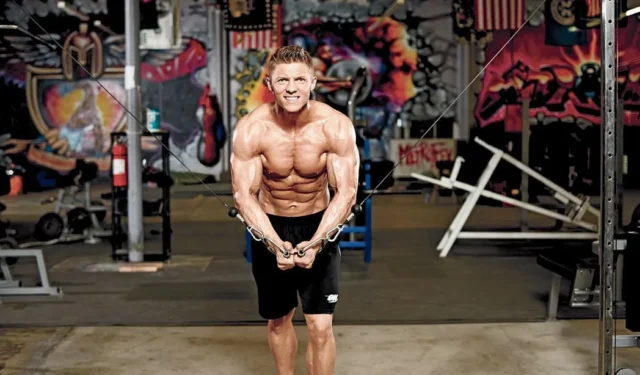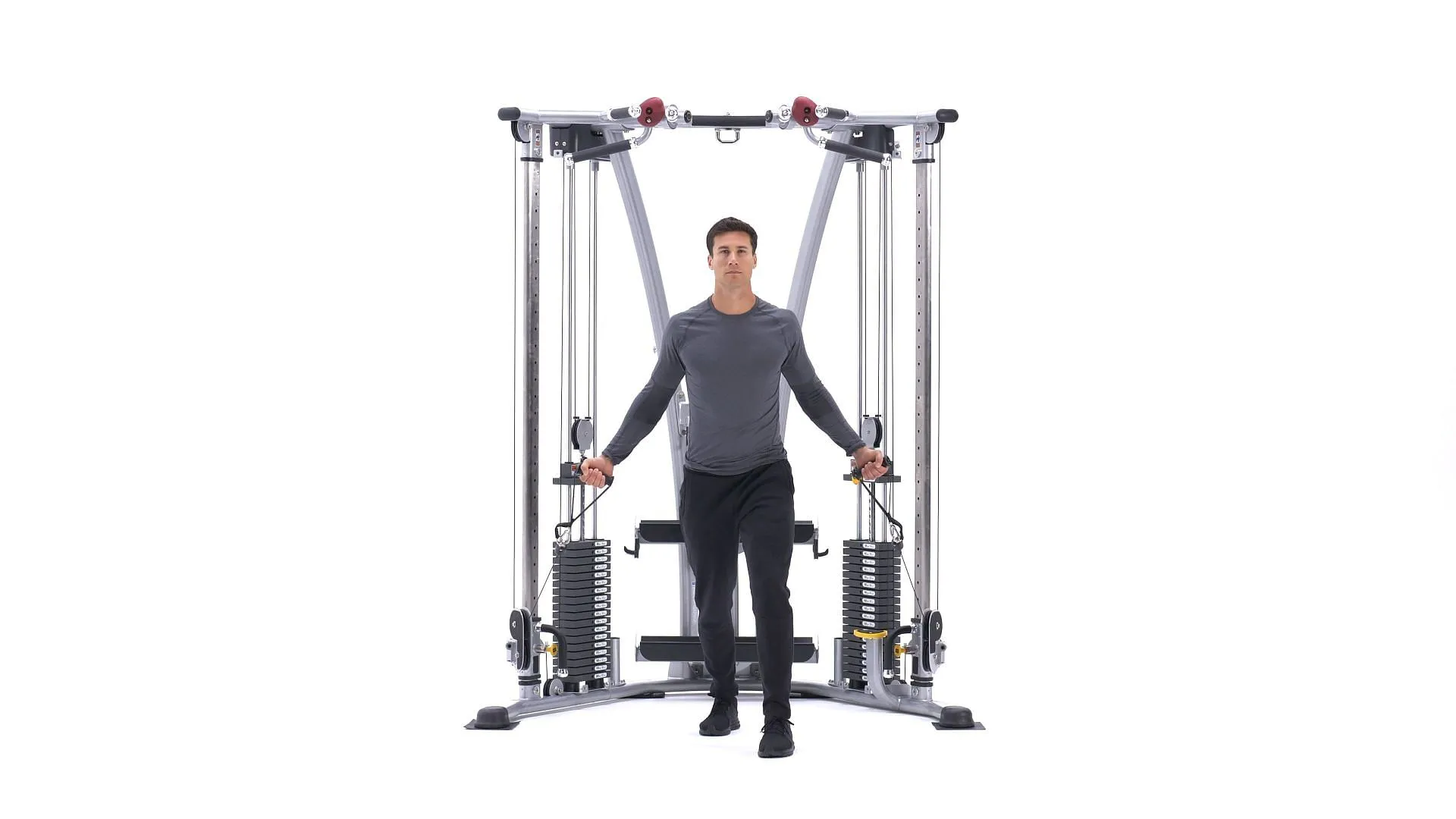
In this article, we delve into the details of cable crossovers for lower chest, exploring the proper technique, variations and key benefits.
When it comes to achieving a well-rounded, chiseled chest, the lower pecs often require special attention. One highly effective exercise for targeting this area is cable crossovers for the lower chest.
Cable crossovers engage the lower chest muscles in a unique way, providing both strength and aesthetic benefits.
Understanding cable crossovers for lower chest

Cable crossovers for the lower chest are compound exercises that primarily focus on the pectoralis major, with particular emphasis on the lower region of the chest.
This exercise involves crossing the cables over each other to create resistance, challenging the lower chest muscles to contract and work against the force.
Proper technique for cable cross lower chest
To maximize the effectiveness of cable crossovers for the lower chest, it’s crucial to maintain proper form throughout the exercise.
Follow these steps to perform cable crossovers for the lower chest correctly:
Starting position
- Stand in the center of a cable machine, grasping a handle in each hand.
- Keep your feet shoulder-width apart, and maintain a slight bend in your knees.
- Position the pulleys at shoulder height or slightly above.
Execution
- Engage your core, and maintain a straight posture with a slight forward lean.
- Extend your arms out to the sides, keeping them slightly bent at the elbows.
- Pull the handles inward in a controlled manner, crossing them in front of your body to target the lower chest.
- Squeeze your lower chest at the peak of the movement for maximum contraction.
- Slowly return to the starting position, maintaining tension in the lower chest muscles throughout the entire range of motion.
Variations of cable crossovers for lower chest

To keep your lower chest workouts dynamic and challenging, consider incorporating these variations of cable crossovers for the lower chest:
Lower cable crossovers for lower chest
- Adjust the pulleys to the highest position.
- Begin with your arms extended above your shoulders, and cross them downward to engage the lower chest muscles.
- This variation of cable crossovers specifically targets the lower chest.
Reverse cable crossovers for lower chest
- Start with the cables positioned at the bottom of the machine.
- Cross the cables upward instead of downward to target the upper chest fibers and achieve a more balanced chest development.
- This variation complements the lower chest focus of cable crossovers for a well-rounded chest.
Single-arm cable crossovers for lower chest
- Use one cable at a time, grasping the handle with one hand.
- Maintain stability and balance while performing the exercise on each side, effectively engaging the lower chest muscles.
- This variation adds an element of core engagement and challenges muscle coordination while targeting the lower chest.
Key benefits of cable crossovers for lower chest
Incorporating cable crossovers for the lower chest in your chest routine offers numerous benefits.
These include targeted development of the lower chest muscles, which helps strengthen and define them. Additionally, cable crossovers for lower chest create constant tension on the muscles, leading to improved activation and growth.
Furthermore, they engage the stabilizing muscles of the shoulder girdle and core, promoting enhanced stability and balance. Lastly, cable machines’ versatility and adjustability allow you to target the lower chest from different angles and adjust the resistance to suit your needs during cable crossovers.
Cable crossovers for the lower chest are a valuable addition to any lower chest workout routine.
By focusing on proper form, exploring variations and reaping the benefits of cable crossovers for the lower chest, you will be well on your way to sculpting a powerful, well-defined lower chest.
So, grab those cables. Unleash your inner strength, and embark on the journey towards a more impressive chest physique with cable crossovers for the lower chest.




Leave a Reply ▼